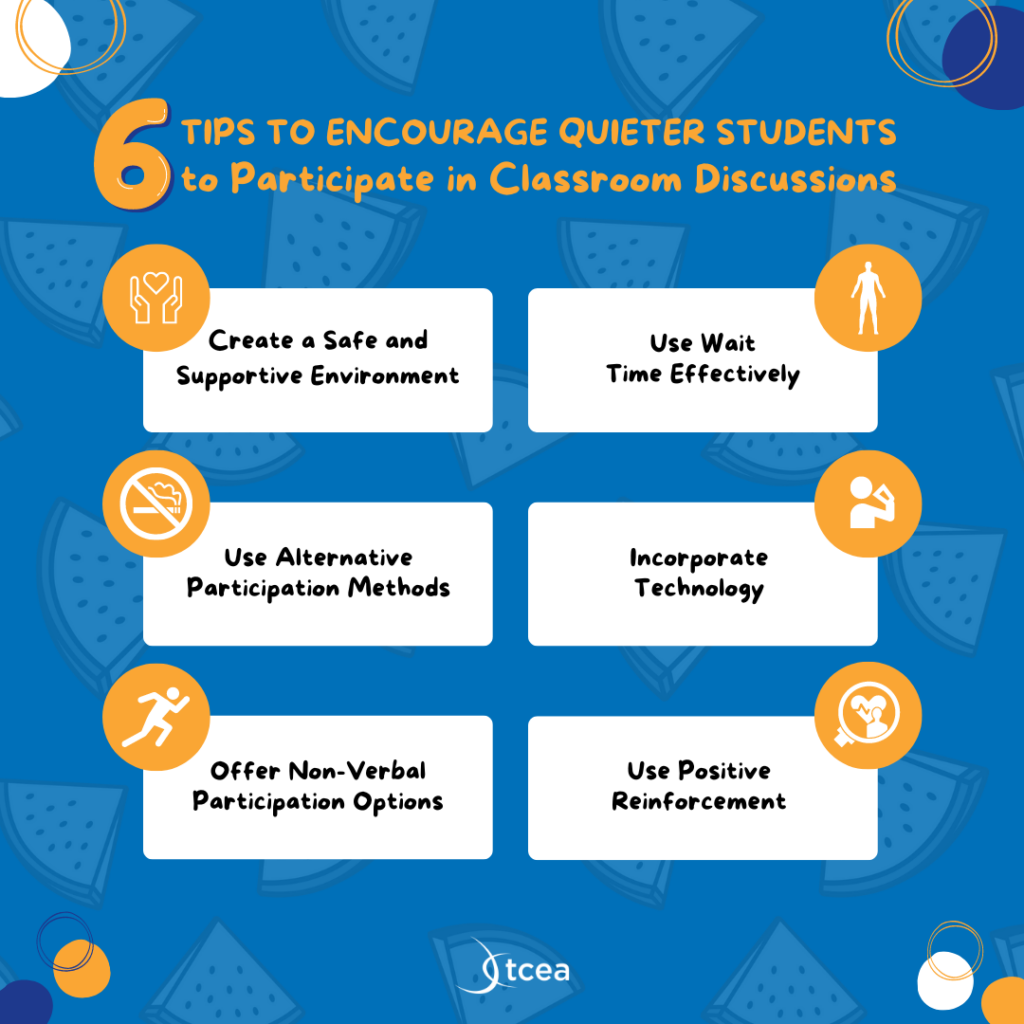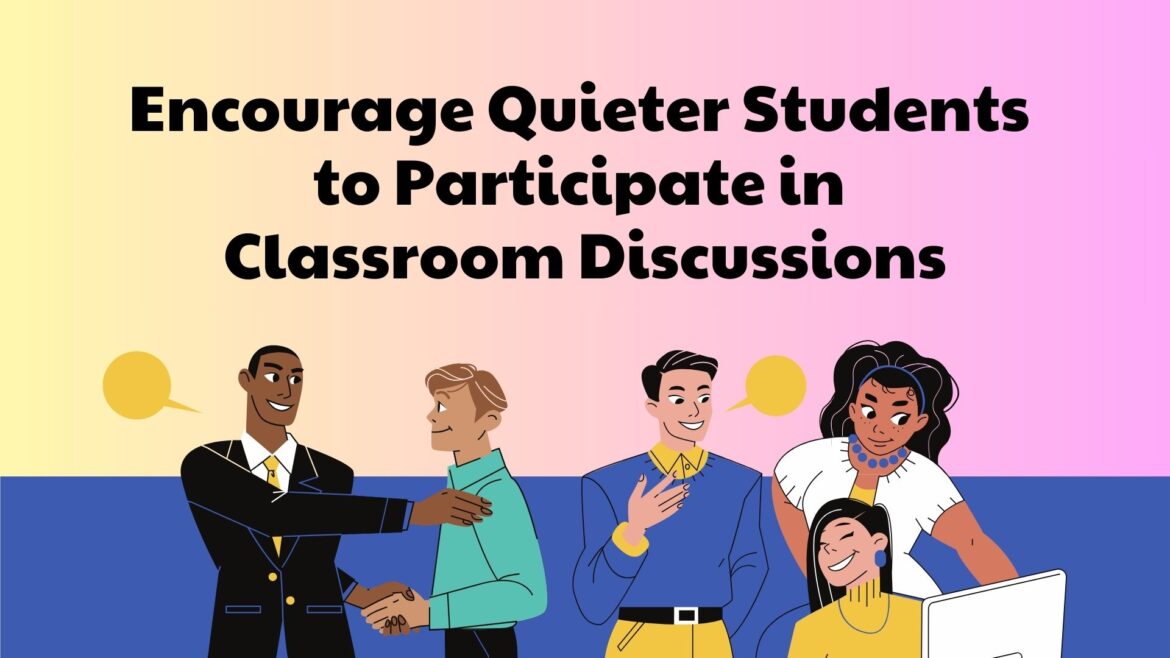As teachers, we often face the challenge of encouraging all students to participate in classroom discussions, especially those who are naturally quieter or more introverted. Classroom discussions are a vital part of the learning process. They help foster critical thinking and enhance communication skills. Therefore, it’s important that all students participate. Quieter students often have valuable insights to share but may hesitate due to shyness or lack of confidence. Here are some effective strategies to help quieter students find their voice in classroom discussions.
Create a Safe and Supportive Environment
One of the main reasons quieter students hesitate to participate is the fear of being judged by their peers. They also fear making mistakes. To counter this, create a classroom environment where all contributions are valued. Establish ground rules that emphasize respect for diverse viewpoints. In addition, consistently reinforce the idea that mistakes are part of the learning process. A safe and supportive space will make it easier for introverted students to take the leap into discussions.
Tip: Start each discussion by reminding students that all ideas are welcome and encourage positive feedback from peers when someone contributes.
Use Wait Time Effectively
Wait time is the pause between a teacher’s question and a student’s response. Quieter students might need extra time to process information before responding. After asking a question, wait 5-10 seconds to give everyone, especially quieter students, the chance to come up with a response. Resist trying to try to fill the silence. Use nonverbal cues, like looking around the room to indicate you’re waiting for responses. After a student responds, pause before asking the next question or calling on another student. This gives time for other students to consider the response and potentially add their thoughts.
Tip: After asking a question, say, “Take a moment to think about that,” and then wait. This gives all students, particularly those who are more reserved, a chance to prepare their responses.
Use Alternative Participation Methods

Not all students are comfortable with verbal participation in large group settings. By offering alternative methods, you can ensure that every student has an opportunity to engage in meaningful ways. Here are some alternative participation strategies.
- Think-Pair-Share – This strategy gives students a chance to gather their thoughts before speaking in front of the entire class. Here’s how it works:
- Think: Give students time to think about a question or topic individually.
- Pair: Let them discuss their thoughts with a partner.
- Share: Finally, they can share their ideas with the larger group.
- Small Group Discussions – Organize students into small groups to discuss topics before sharing with the larger class. Quieter students often feel more comfortable speaking in smaller settings. Your small groups can be comprised of 3-4 students. When students are in their groups, assign them roles such as the summarizer, note-taker, or question-asker. This will provide quieter students with a clear purpose in the discussion and reduce the anxiety of not knowing what to say.
- Four Corners – After reading a particular text or teaching, assign a different position or perspective to each corner of your room. Have students go to the one they agree with or are interested in. Students in each corner have a discussion among themselves on the position/perspective.
Tip: Use a variety of participation strategies so that quieter students get the opportunity to engage in different ways over time, building their skills and confidence.
Incorporate Technology
Digital tools can help students participate in ways that feel less intimidating. Tools like Padlet or Google Classroom’s Question feature allow students to write their responses, which can then be shared with the class. This can help quieter students express their ideas first before discussing them in class.
Tip: Allow students to first submit responses digitally, then highlight and discuss some of the responses with the class. This allows quieter students to contribute in ways they are more comfortable with while building confidence to speak aloud.
Offer Non-Verbal Participation Options
Participation doesn’t always have to be verbal. Try incorporating non-verbal methods of communication. For example, students could write responses on sticky notes, or they could record their responses on a Padlet. This will allow quieter students to share their ideas without the pressure of speaking out. These non-verbal options can later be discussed as a class, giving students a chance to see how their contributions fit into the larger conversation.
Tip: Use exit tickets, sticky note activities, or digital polls to collect student input, and then discuss some of the ideas with the class to highlight the contributions of quieter students.
Use Positive Reinforcement
When quieter students do participate, it’s important to acknowledge and celebrate their contributions. Positive reinforcement not only boosts their confidence but also signals to the class that every voice matters. Celebrating all contributions, whether through verbal praise, nods of approval, or other affirmations, encourages quieter students to share more often.
Tip: After a quieter student shares, respond with a comment like, “That’s a great point,” or “I really appreciate your perspective,” to help them feel valued.
Encouraging quieter students to participate in classroom discussions requires patience, empathy, and creative strategies. With time and consistency, your quieter students will feel more comfortable speaking up and engaging in meaningful discussions that enhance their learning experience.


